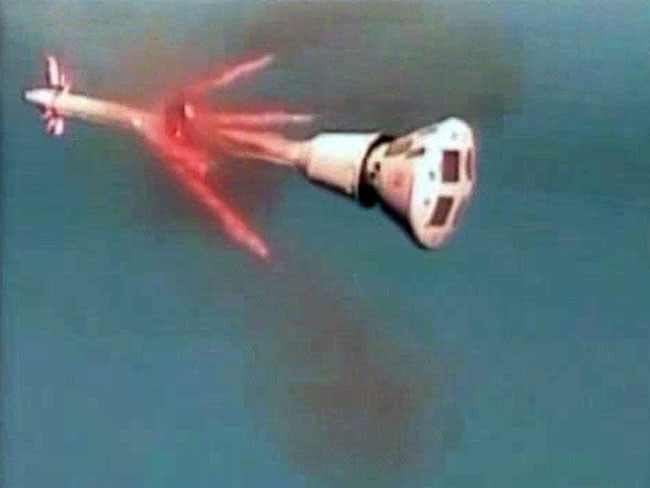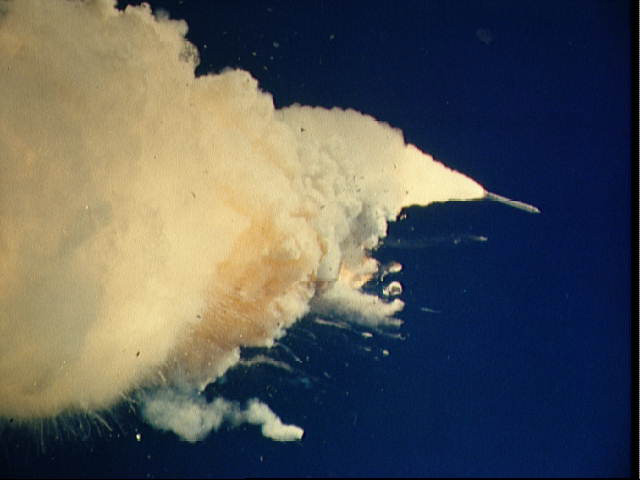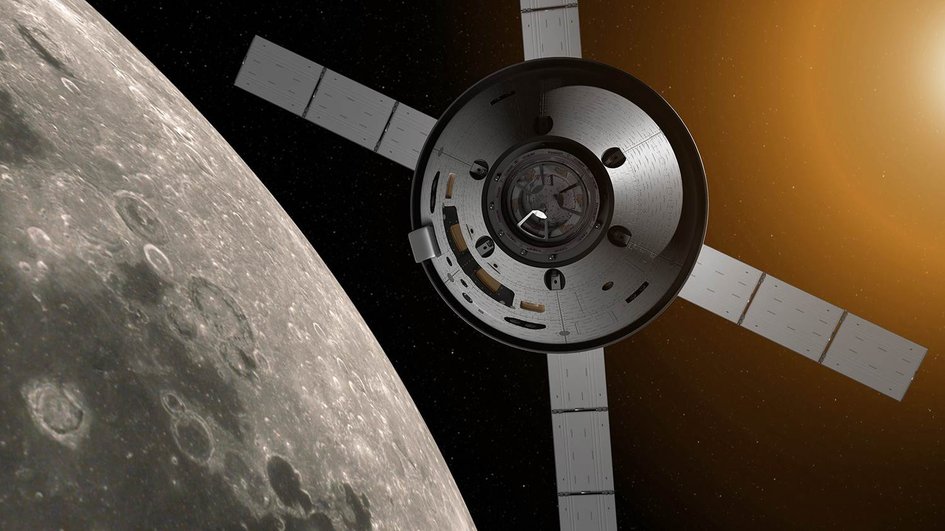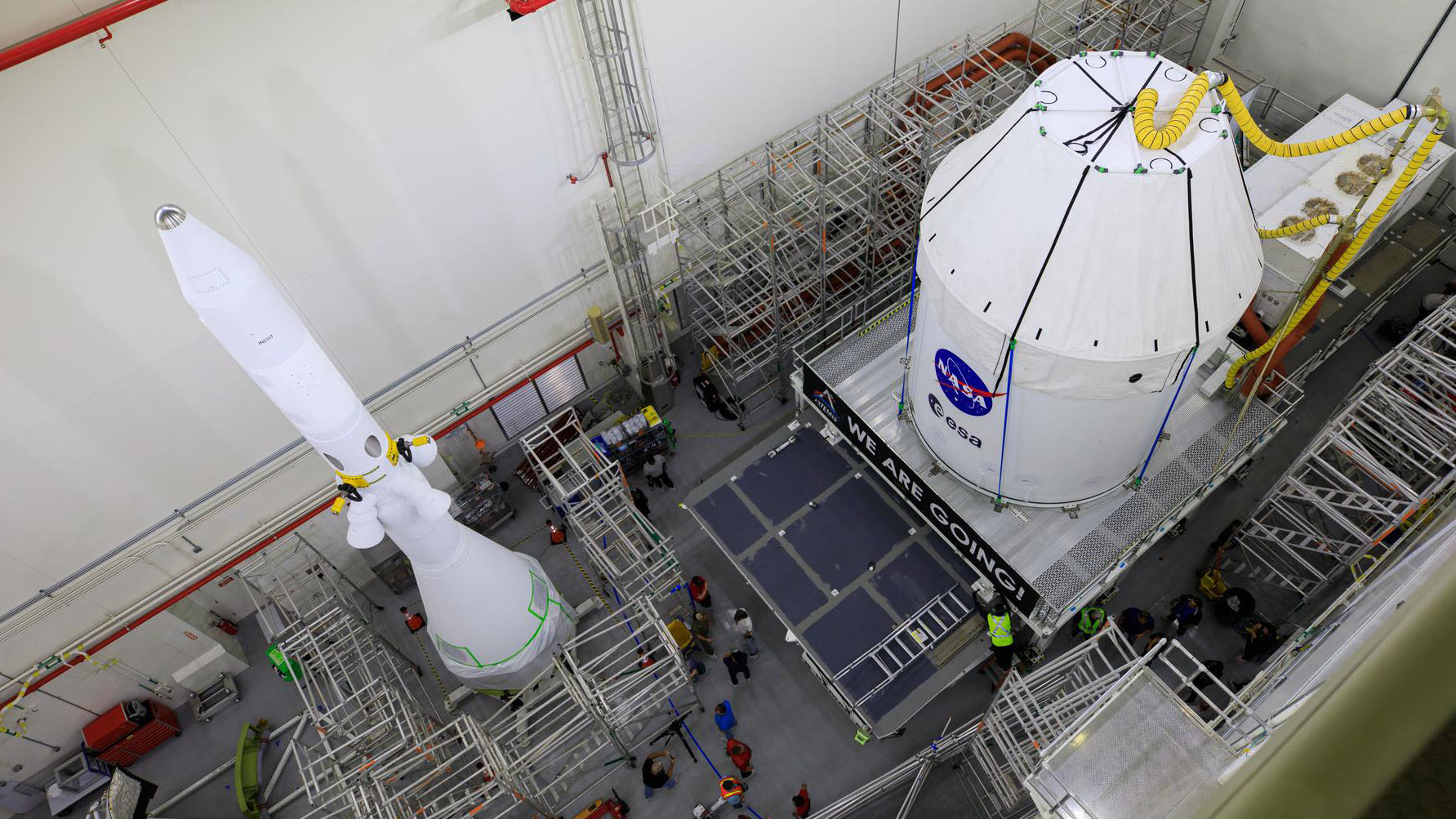55 years after Apollo 1 fire, NASA's lessons live on as Orion aims for the moon
On the 55th anniversary of the incident that killed three astronauts, the lessons learned persist.
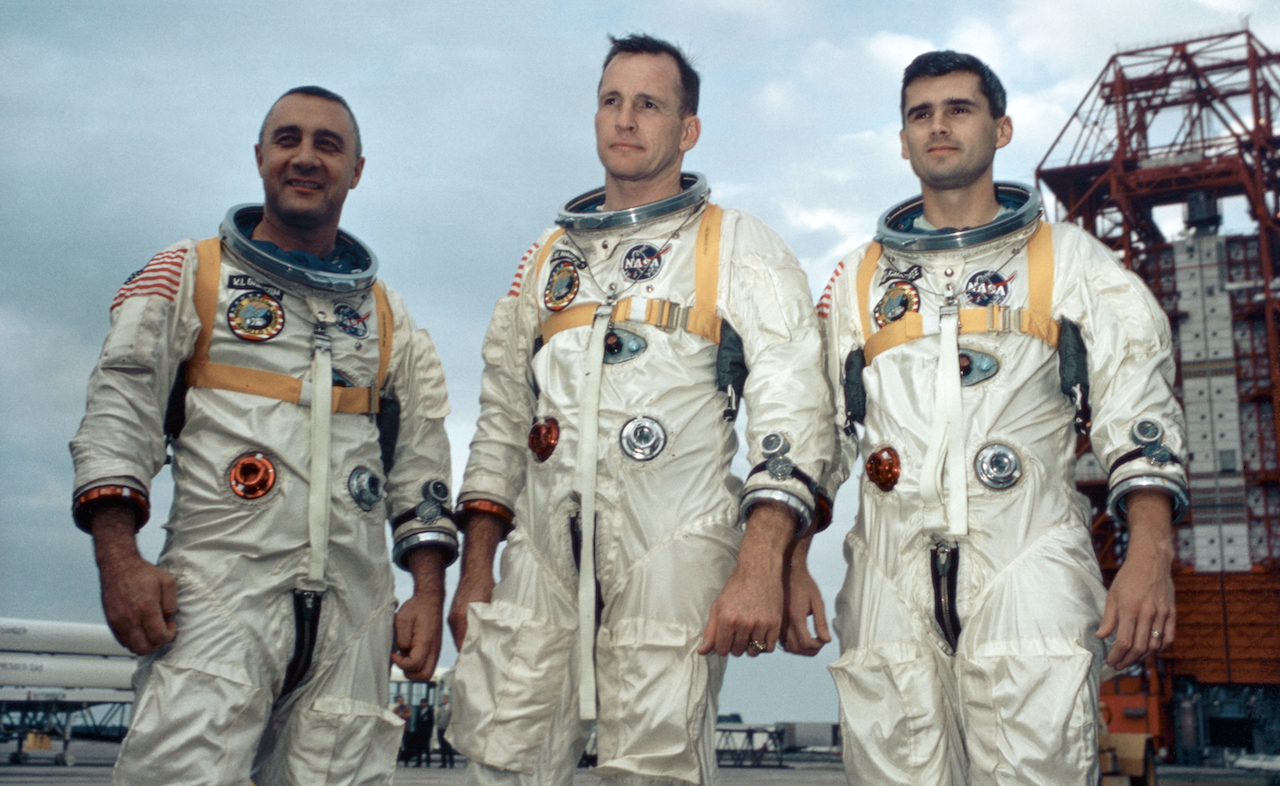
NASA's last moonbound program for astronauts lifted off under the shadow of a fatal incident on the Apollo 1 spacecraft, 55 years ago today (Jan. 27).
Apollo 1 was expected to fly to Earth orbit later in 1967 with astronauts Gus Grissom, Roger Chaffee and Ed White on board. During a test on the launch pad, however, a fire erupted and rapidly asphyxiated all three astronauts.
Some of the contributing factors to their deaths included a pure oxygen atmosphere that accelerated a fire, and a hatch that proved impossible for the astronauts to open quickly, although the causes were complex.
The cause of the fire was never fully determined, although NASA and its contractors took numerous measures to fix the technical and culture problems associated with the incident. Their efforts allowed Apollo to fly astronauts into space 18 months later and to, for most of the program's missions, achieve success. (The exception was the near-fatal Apollo 13 in 1970.)
As NASA prepares to send humans to the moon again with the Artemis program, the agency will need to bear the lessons in mind of past space incidents, especially those involving fatalities.
Related: Photos of the Apollo 1 Fire: NASA's First Disaster
More: The Fallen Heroes of Human Spaceflight
"I can't say you exactly how we compare to Apollo, but it is safe to say that they had quite rigorous processes," Chuck Dingell, Orion spacecraft chief engineer at NASA, told Space.com. "But anytime there's an accident, we always sharpen those [processes]."
Breaking space news, the latest updates on rocket launches, skywatching events and more!
Orion's legacy also has much to do with the Columbia breakup of 2003 during re-entry, which killed seven astronauts shortly before Orion planning began in earnest in 2004. "Our action was intense focus on crew safety and in particular, abort systems," Dingell said of those early days.
In fact, much of the early focus of the program was on emergency systems and abort systems, he noted. As a major symbol of that: The program's first major flight test, called Pad Abort 1, flew the crew abort system for 135 seconds from the U.S. Army's White Sands Missile Range near Las Cruces, N.M. (A second abort system test occurred in 2019.)
Both NASA and Lockheed Martin told Space.com that safety remains top of mind as they build out the Orion spacecraft and the other systems aiming to bring astronauts aloft in 2023. Apollo 1, they say, forms part of the network of "lessons learned" from past missions aiming to keep today's astronauts safer during their missions.
At Lockheed, Orion program manager Michael Hawes was hired after 33 years at NASA, including working on the "return to flight" program following Columbia's fatal incident. He briefly outlined four safety measures put into Orion's design, focusing on the key aspects of Artemis related to astronaut safety.
The hatch: The lever-operated hatch can be opened from the inside by astronauts. it opens to the outside of the spacecraft, as opposed to Apollo 1's hatch that opened on the inside. Orion required a slightly larger hatch compared with the Apollo spacecraft, which is "mechanically, a harder challenge, to get the right sealing surface and counterbalance weights," Hawes said. Engineers at Lockheed Martin examined a later Apollo program hatch closely to use design features aiming for a rapid time to open, especially in cases of contingency.
The atmosphere: NASA hasn't allowed pure oxygen environments in spacecraft on the pad since Apollo 1, instead requiring an oxygen-nitrogen mix close to what is encountered at sea level. "We actually also have a requirement for the system to operate in near vacuum in case of a leak," Hawes added, which they tested a couple of years ago.
The heat shield: Broken heat shield tiles were one of the many causes that led to Columbia's demise. Orion has a special ablative heat shield that is designed for the more rapid speeds coming back from the moon. Engineers were able to test the heat shield in space at 80 percent of lunar re-entry speeds during a 2014 Earth-orbiting trip called Exploration Flight Test-1 (EFT-1). The Orion heat shield, simply put, is a reformulated design based on what was used in Apollo, but with no carcinogenic-bearing materials as our understanding of materials has changed since the 1960s, Hawes said.
Flight computers: The flight avionics on Orion have much more powerful software compared to what was available to astronauts in the Apollo program or even in the shuttle program, which at first used computers developed in the 1970s. "They have more software and are able to actually respond to a problem, resync themselves and continue on flight. That is another big safety modification that the Apollo team would not have had," Hawes said.
Like any aerospace incident, the causes behind Apollo 1 were complex. The incident generated a 256-page NASA report and lengthy Congressional investigation including public hearings, among many other results.
The main causes are outlined on this summary page of the findings and recommendations from NASA's report on Apollo 1. NASA's management review of contractor North American Aviation (today a part of Boeing) covers some of the culture aspects of what caused Apollo 1.
Changes were made for future missions to address technical issues that contributed to the problems of Apollo 1, such as removing flammable materials from the spacecraft, changing the hatch design to allow for rapid exits, and addressing faults in training, spacecraft design (including wiring), firefighting procedures and quality control. Additionally, NASA and its contractors revamped safety practices with a focus on inclusivity and quality control.
NASA was forced to reconsider its safety practices and spacecraft standards twice during the space shuttle program following fatal incidents: the Challenger explosion of 1986, and the Columbia breakup during re-entry in 2003.
In general, discussions of these space shuttle disasters (which again, were highly complex) say that on top of the technical problems that led to each accident, was a set of culture and safety practices that were inadequate to deal with the complex spacecraft.
Famously, for example, some dissenting contractor engineers complained they were left out of the launch decision of Challenger, which afterwards caused NASA to implement a robust decision process to give contractors and employees alike a voice and fact-based assessment of possible risks. The process allows for reviews at different levels of the agency, all the way up to the administrator's office.
The challenge, naturally, is continuing to remain vigilant. But NASA's Dingell said the agency has improved its organizational processes to something that is stronger than even 10 years ago, let alone 55.
Today's safety reporting structure at NASA, Dingell said, includes independent organizations with parallel reporting paths focused on mission assurance, engineering, safety and medical aspects, among other things.
The organizations are funded independently, "so there's no conflict of interest," Dingell said, and the safety standards those organizations call for "cannot be waived independently."
The design of the Orion spacecraft also has redundancy built into it, he said. "For failure tolerance, the spacecraft ... [has] to be able to sustain at least a single failure and not be catastrophic to the mission or the crew. We have reliability requirements that have to be verified by very detailed probabilistic risk assessments."
Additionally, all contractors on Orion have detailed requirements relating to safety that they need to produce for an intensive NASA safety and engineering panel review.
NASA reviews hazard reports to assess what could go wrong with a system, what possible causes could make that problem happen, and what controls can be implemented to prevent the causes from happening. The agency also examines every component on the spacecraft and assesses the effect of those components failing either independently, or in combination with other components, to make adjustments as required.
Overall, NASA's Dingell said, at least 12 major changes to spacecraft design have occurred over the decades of work that have gone into Orion. On the contractor side, Lockheed Martin has been working on the design for Orion since 2005, as the spacecraft has morphed through multiple NASA deep-space programs (including, for a time, the desire to pivot to an asteroid mission).
Lockheed's Hawes said from the beginning, his company sought to inform the requirements of the system with all the gains in engineering through NASA's history from Mercury all the way up to the International Space Station.
"On the NASA side, they specified that the next human system needed to be 10 times safer, or an order of magnitude safer, than the shuttle had been," Hawes said, pointing to Orion's parachutes and launch abort system as some of the things that necessarily required the most safety focus due to them being mission-critical.
Another tool Lockheed used was probabilistic risk assessment to rank the major risks of the program, using statistical tools simply not available to Apollo engineers due to a lack of computing power.
During EFT-1, he added, they targeted testing on 17 of the top 34 risks of the Orion program in an effort to reduce problems. There also have been many, many years of single-system testing and integrated systems testing on the ground informing the design of Artemis 1.
Hawes keeps a miniature of the Challenger memorial from the Arlington National Cemetery is his office to remind him of the importance of safety, he noted, and said that Lockheed Martin runs its own parallel safety process even before intersecting with NASA's required flight readiness reviews. Lockheed, like NASA, also has an independent review board focused on safety.
"We have very detailed processes for tracking issues and nonconformances as we're building the spacecraft, that trace back to the design of the spacecraft. We culminate in a flight review with the head of the Lockheed Martin Space Company; that's called a president's mission success review," he said.
Astronauts are involved at every step of the way. Hawes spoke with Space.com Tuesday (Jan. 26) during a business trip in Houston, just hours after Orion underwent a pre-flight readiness review check for Artemis 1 with a group of people including NASA astronaut Randy Bresnik. Hawes called the presence of an astronaut "critical" in all steps Lockheed performs on Orion, to make sure "we are doing things that are going to keep them safe and are going to bring them back home to their families."
He added he is excited to welcome the crew of Artemis 2 when NASA makes the announcement, which he was told will be in a few months. "These are the folks that are going to fly [on Orion], so I'm looking forward to that," he said. That mission is supposed to do a moon-orbiting flight in 2024.
To be sure, fatal incidents are not confined to NASA; spaceflyer deaths or incidents have occurred in other countries as well. A fairly recent example, where everything ended up fine, was the American and Russian crew who experienced a 2018 abort aboard a Russian Soyuz spacecraft. Russia, working with NASA, addressed the underlying cause within weeks, allowing for launches to resume.
NASA's safety practices also extend to the agency's commercial crew program that brings spaceflyers to the International Space Station aboard private SpaceX and (eventually) Boeing taxis. In 2021, for example, a senior NASA official pointed to Challenger as one prominent example of a safety learning moment still taken to heart by engineers a generation after the shuttle fell apart.
"All organizations have a culture, and it's almost like the DNA associated with an organization. It [Challenger] has a history and a memory. Even though people come and go, that DNA is always there," Phil McAlister, NASA's director of commercial spaceflight development, told Space.com in 2021.
NASA honors all fallen spaceflyers during an annual day of remembrance, which this year coincides with Apollo 1's anniversary on Thursday.
Follow Elizabeth Howell on Twitter @howellspace. Follow us on Twitter @Spacedotcom or on Facebook.

Elizabeth Howell (she/her), Ph.D., was a staff writer in the spaceflight channel between 2022 and 2024 specializing in Canadian space news. She was contributing writer for Space.com for 10 years from 2012 to 2024. Elizabeth's reporting includes multiple exclusives with the White House, leading world coverage about a lost-and-found space tomato on the International Space Station, witnessing five human spaceflight launches on two continents, flying parabolic, working inside a spacesuit, and participating in a simulated Mars mission. Her latest book, "Why Am I Taller?" (ECW Press, 2022) is co-written with astronaut Dave Williams.

